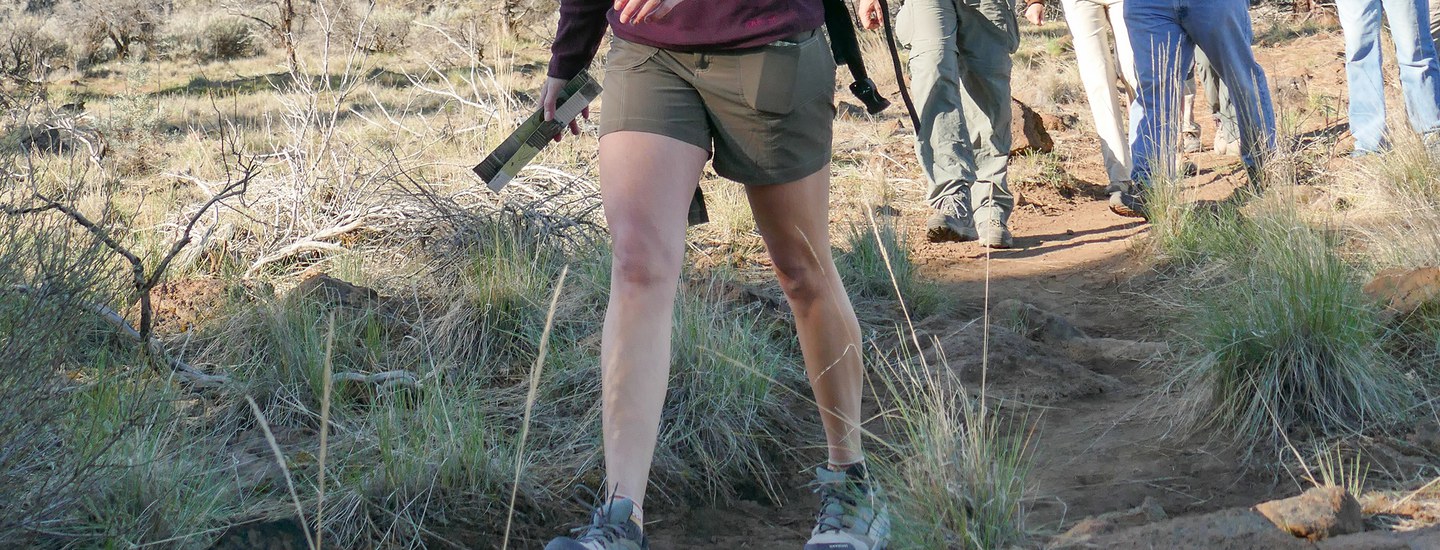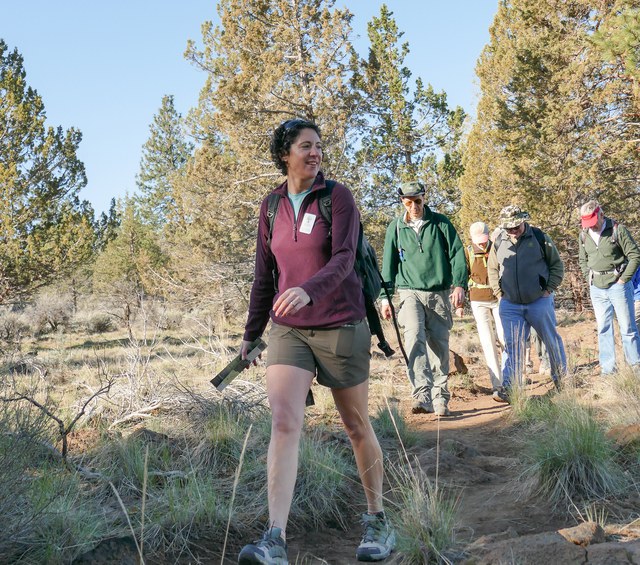Spring is here and warmer weather means it’s time to dust off those hiking boots and hit the trails for some fresh air, epic views, and…ticks. If you are like me and the mention of ticks makes your skin crawl, fear not! Here is a primer on where ticks live in Central Oregon, how to avoid them, and what to do if a tick attaches to you. Knowing these basics will help keep you safe (and paranoia free) while you play outside this spring and summer.
Ticks in Central Oregon
Unfortunately, ticks live in most parts of Central Oregon. They are especially prominent in dense vegetation such as long grass, bitterbrush, or manzanita. If you have hiked at any Land Trust Preserve in the spring or summer, you have probably encountered a few ticks. Ticks are most active in May–July but with the trend for warming temperatures, tick season is becoming longer. The relatively mild winter we had this year brought them out with a vengeance by early April!
We have two predominant types of ticks in Central Oregon. Black Legged Ticks (Ixodes pacificus), also known as Deer ticks, and Rocky Mountain Wood Ticks (Dermacentor andersoni) both of which can carry diseases. Lyme Disease, Rocky Mountain Fever, relapsing tick fever, and anaplasmosis are all found in Central Oregon. The good news is that a tick usually needs to be attached for a day or two in order to transmit a disease to its host, so early detection will help keep you safe.
As the climate continues to change, warmer weather is increasing tick populations. After our recent warm and wet weather tick season is expected to be more intense. By understanding how you can avoid tick bites you can protect yourself and get back to enjoying the places you love!
Avoiding ticks while hiking:
- Stay on the trail. Ticks do not jump or drop from trees, they latch on as you brush against them. Staying on trails and keeping out of vegetation is your best defense against these unwanted hitchhikers.
- Wear long pants. Tuck your pants into your socks, or wear gators so they don’t climb up your leg.
- Do a “tick check” after every outing. Ticks tend to migrate to warmer parts of the body, so check your armpits, groin, hair and scalp, and behind the ears and knees. They can range from the size of a poppy seed (1mm) to the width of a pencil eraser (5mm) depending on the life stage. Keep an eye out for even the tiny ones!
- Take a shower. Washing with a washcloth in the shower will usually remove ticks that are not yet attached.
- Tumble dry clothing on high heat for 10 min to kill any ticks hidden in your clothes. Ticks can withstand going through a wash cycle but dry heat will kill them.
- Keep dogs on leash and on the trail and check them for ticks after each outing. Dogs can also get diseases from ticks.
- Consider using a Permethrin repellent spray on clothing or shoes. *Note: Although low percentages of Permethrin (0.5%) is considered safe to humans and dogs, it is toxic to bees and fish. Never spray near flowers or other pollinators habitat. Do not use in or around water.*
What to do if you get a tick:
- Remove the tick: Grab the tick with a pair of tweezers near its head as close to the skin as possible and pull straight out--don’t yank or twist. Clean the area with alcohol followed by soap and water.
- Contact the Oregon Lyme Disease Network: 541-321-6536. They can help identify the tick and provide medical resources.
When to see a doctor:
Visit a doctor if you have any of the following symptoms within 30 days of a tick bite. Note that not all patients who have contracted a disease from a tick bite have symptoms within 30 days.
- Rash. About 40% of the people present with a rash, it is not always a bullseye shape.
- Fever, or cyclical fever about ever three weeks
- Swollen or painful joints
- Headache, nausea/ loss of appetite, or extreme fatigue
- Changes in personality
- Cardiac rhythm change – seek immediate medical attention.
Additional Resources
- Oregon Lyme Disease Network provides patient resources, support, and community education.
- Lyme CME provides trainings for medical providers.
- Learn more about the effects of climate change on tick populations.
Thank you to Theresa Denham of Oregon Lyme Disease Network for providing information and resources for this blog post.


